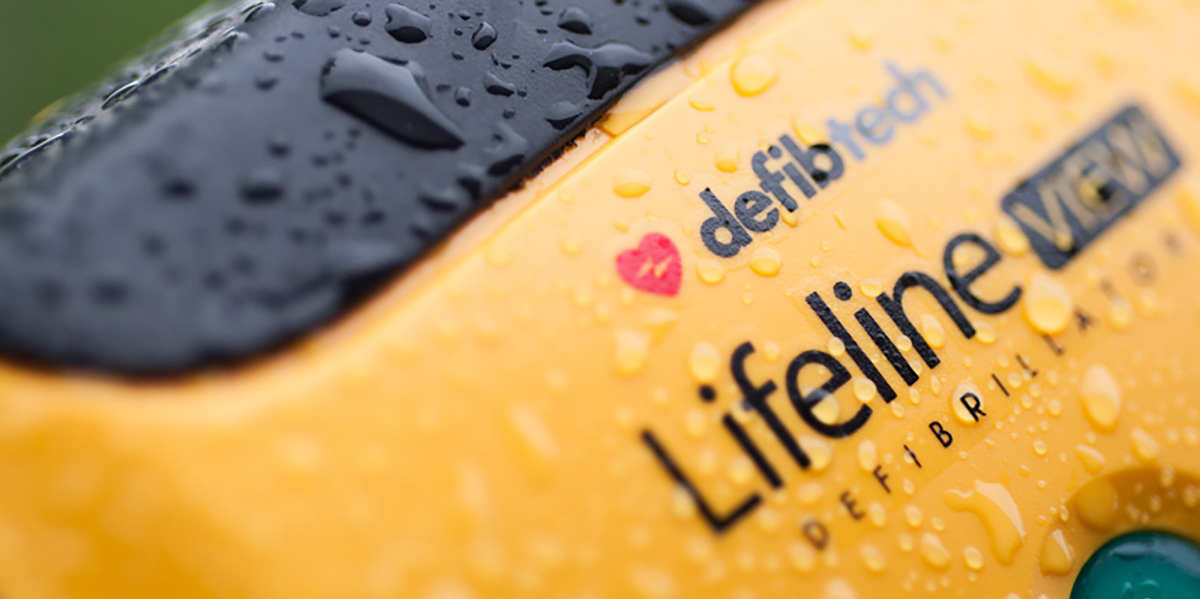News
Latest News
March 6, 2023

When sudden cardiac arrest occurs, it is crucial that an AED is used within three minutes to ensure the highest chance of survival. AEDs need to be placed in ALL locations, but it is important to keep in mind environmental specifications when placing AEDs in different elements.
Our Defibtech Lifeline AED and VIEW AED are both very durable machines that can withstand many different environmental settings. Let’s take a look at some of their environmental specifications.
Lifeline AED
- Operating Temperature: 0 to 50°C (32 to 122°F)
- One Hour Operating Temperature Limit (extreme cold): –20°C (–4°F)
- Sealing/Water Resistant: IP54; Dust Protected, Splash Proof
VIEW AED
- Operating Temperature: 0 to 50°C (32 to 122°F)
- One Hour Operating Temperature Limit (extreme cold): –20°C (–4°F)
- Sealing/Water Resistant: IP55; Dust Protected, Protected against water jets
Now, we’ll discuss some different settings and how to make sure your AED is always ready to help save a life!
Keeping an AED in your car with you at all times can be very beneficial. Sudden cardiac arrest can occur at any time and having an AED with you might be the difference in helping to save someone’s life. There are countless stories of people who have kept an AED in their car and used it when an emergency happened. It is important to remember, if you are leaving your car outside in extreme cold temperatures for an extended period, to bring the AED inside and leave it in a place that you will not forget the next time you use your car. If you live in a location that has extremely hot temperatures, don’t leave your AED right in the sun. Place it in the trunk so the AED does not get direct sunlight and hit an extremely hot temperature.
Having an AED near all pools is very important. Remember, someone does not have to be completely dry when using an AED on them. Dry the area of the chest where the pads are placed before sticking them to the person to ensure they adhere to the skin as well as possible. The person CAN be in a small puddle of water when using an AED. When placing an AED by a pool, we want to make sure it is in a location that is not too close to the water where it can fall in and be submerged, but we also want it to be close enough that it is accessible within three minutes of where an emergency occurs. We NEVER want the AED in a locked cabinet. If a lifeguard is always on duty, they can ensure the AED is out and ready to be used when people are using the pool. If there are times that no lifeguard is on duty, the AED still needs to be accessible in a cabinet that is NOT locked somewhere on the pool deck.
Although sudden cardiac arrest can affect anyone, athletes tend to be at a higher risk for sudden cardiac arrest due to the strenuous activity and the stress level that comes with intense practice or competition. AEDs should be on all sidelines! The problem with having an AED on the sideline is, where do you put it so it is ALWAYS there? Coaches or parents shouldn’t be taking it home with them. Having an outdoor, weather resistant, temperature-controlled cabinet is needed so the AED is accessible no matter who is out there competing.
Golf courses are the 5th most common location for someone to suffer sudden cardiac arrest. Often, the 18 holes of a golf course are spread out amongst a vast area of land, so just having an AED in the pro-shop is not enough. AEDs need to be accessible quickly and depending on the location on the course, it can take longer than three minutes for an AED to come from the pro shop. Having AEDs accessible on golf carts or in outdoor, weather resistant, temperature-controlled cabinets can help save a life.
Whether hiking, skiing, or snowboard, oftentimes a mountain can be a very remote place where AEDs might not be accessible. Yet, these are examples of activities that can put someone at high risk for sudden cardiac arrest. Having an AED with a park ranger is not enough. AEDs should be accessible throughout mountains so that if sudden cardiac arrest strikes, it can be responded to quickly.
Having AEDs in all locations is imperative to increasing survival rates from sudden cardiac arrest. When placing an AED in the elements, consider the environmental specifications to ensure the AED is always ready to help save a life!
To learn more about Defibtech and to join us on our quest to save lives from sudden cardiac arrest, visit www.Defibtech.com.
Sources:
https://karenowoc.com/kron-4-golf-link-to-sudden-cardiac-arrest/#:~:text=Golf%20courses%20are%20the%20fifth,less%20than%20seven%20percent%20survive.